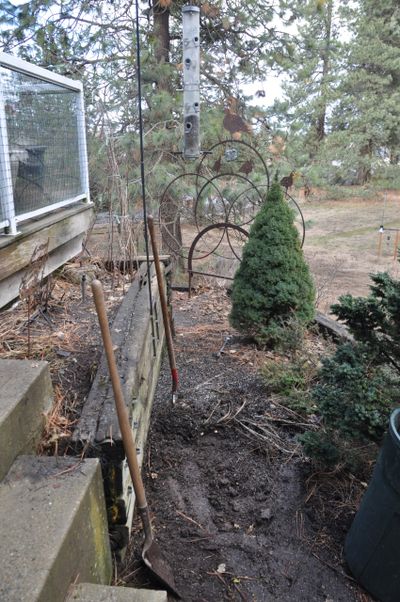This column reflects the opinion of the writer. Learn about the differences between a news story and an opinion column.
Gardening: Keeping salmonella at bay: Disinfect bird feeders and clean area under them

We humans aren’t the only critters dealing with a pandemic.
Our native finches, pine siskins and other songbirds are dealing with a salmonella epidemic right now across the Northwest and the cold isn’t going to slow it down anytime soon.
The Washington Department of Fish and Wildlife is asking anyone who feeds wild birds to take down their feeders until April 1 to help the birds disperse away from the crowds around feeders where the bacteria are easily transmitted.
Sound familiar? The good news is that with the light snow cover and unusually warm winter temperatures, there is still plenty of food out in nature for them to forage.
According to Kristin Mansfield, a veterinarian with the WDFW, there have been a few reports of sick or dead birds in Spokane and northeastern Washington. However, a bigger problem has been seen on the coast where many of the birds hang out for the warmer winter.
The salmonella bacteria are the same ones that cause issues for humans in fresh produce and fruit. The bacteria are carried by the birds in their feces and spread when the birds congregate on and especially under feeders. Because birds often drop undesirable seed on the ground, other birds pick through the dropped seed leaving feces behind to mix with the seed. The bacteria load builds up over time.
“The first indication of the disease for bird watchers to look for is often a seemingly tame bird on or near a feeder. The birds become very lethargic, fluff out their feathers, and are easy to approach. This kind of behavior is generally uncommon to birds,” Mansfield said.
“Unfortunately, at this point there is very little people can do to treat them. The best course is to leave the birds alone.”
Mansfield said the spread of the disease this winter could be exacerbated by what appears to be an “irruption” of winter-roaming finches – an anomaly where finches and other species that generally winter in the boreal forest in Canada and the far north move south and are spotted in areas in larger numbers than nonirruption years. More visitors mean more problems.
The WDFW is asking people to remove feeders until the first of April on the eastern side of the state. This will cause the birds to spread out as they search for food. If you have neglected cleaning up spilled seed on the ground, clean it up and dispose of it in the trash especially if it warms up after the cold snap.
If you can’t bring yourself to stop feeding the birds, then put out only enough food for the day and then clean your feeder daily. To do this, rinse it out with hot water and soap outdoors or in a utility sink that can be scrubbed down. Then dip the feeder in a 10% bleach solution for a few minutes. Allow the feeder to dry before refilling it.
To make a bleach solution, mix nine parts water with one part standard household bleach.